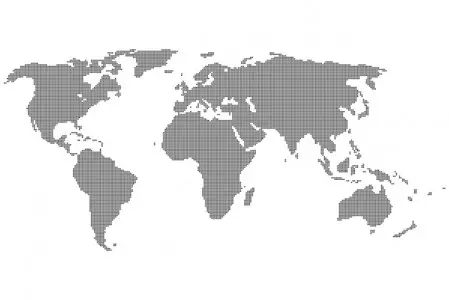Share on Social Media:
The Top 5 Gold Producing Countries
| Country | Gold Production 2011 (kilograms) |
% of World Production | |
|---|---|---|---|
| 1 | China | 362,000 kg | 13.6% |
| 2 | Australia | 258,000 kg | 9.6% |
| 3 | United States | 234,000 kg | 8.7% |
| 4 | Russia | 199,642 kg | 7.5% |
| 5 | South Africa | 181,000 kg | 6.8% |
 Special Report
Special Report
- Gold is produced from mines on every continent with the exception of Antarctica (where mining is not permitted) in operations ranging from artisanal small enterprises employing just a few individuals to very large-scale industrial complexes with hundreds of employees. Total world mine production of gold in 2008 was 3% lower than that of 2007. Mine production in China increased, and China continued as the world's leading gold producer. Annual output in South Africa decreased for the seventh year in a row because of higher costs, lower grade ore, and labour issues. There are 95 gold-mining nations worldwide. (a.)
- In 2009, total global gold supply amounted to 4,287 tonnes, representing a 8% increase on 2008, mainly due to an increase in gold mining output, along with a corresponding increase in the volume of gold scrap processing. China remained the world's largest gold producer for the third year running. The volume of gold production in China increased by 11% over the last year and amounted to 324 tonnes. Among the top 10 leading gold producers, only the USA and South Africa experienced a reduction in the volume of gold production. (b.)
- Jewellery is still by far the most important market for gold. In 2009, demand for gold by jewelry manufacturers reached a record minimum for the last 21 years of 1,759 tonnes. The largest decline in metal consumption by manufacturers of jewellery was observed in India, Turkey, Italy and the USA. 2009 saw record high levels of gold prices. The average evening price fixed for gold on the London Stock Exchange was $972.35 per ounce (USD), some 12% higher than the previous record set in 2008. (b.)
- In 2008, the estimated percentages for end use of gold were jewellery and arts: 72%; dental and medical: 11%; electrical and electronics: 7%; and other: 10%. It was estimated that 15% of all gold ever mined was employed in dissipative industrial uses (where the gold is destroyed during use) or was unaccounted for or unrecoverable. Therefore, of an estimated 157,000 tonnes of gold mined historically through 2008, 133,000 tonnes of gold remains in circulation, with 28,700 tonnes held by central banks as official stocks and 104,000 tonnes held privately as bullion, coin, and jewelry. (a.)
- The leading 15 mining companies produced about one-half of the gold produced in 2008. The top five were, in descending order, Barrick Gold Corp. (Toronto, Ontario, Canada), Newmont Mining Co. (Denver, CO), AngloGold Ashanti Ltd. (Johannesburg, South Africa), Gold Fields Ltd. (Johannesburg), and Goldcorp Inc. (Vancouver, British Columbia, Canada), which accounted for almost one-third of world gold production. (a.)
- George, M. (2008). "United States Geological Survey: 2008 Minerals Yearbook: Gold." Retrieved Jan 3, 2011.
- Polyus Gold. (2011). 2009 Annual Report: "Gold Market in 2009." Retrieved Jan 3, 2011.
Tags:
The Economy, China, The United States, Australia, Mining & Minerals
Sources: United States Geological Survey: 2013 Minerals Yearbook. Please visit the source here
List Notes: Data is top 5 countries with the highest world gold production for the year 2013 in kilograms.
Sources: United States Geological Survey: 2013 Minerals Yearbook. Please visit the source here
List Notes: Data is top 5 countries with the highest world gold production for the year 2013 in kilograms.

